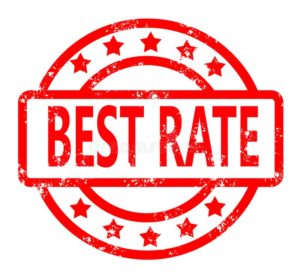 I understand that bad credit shouldn’t hinder your dream of owning a home. In this blog post, we will delve into the world of mortgage options for bad credit in Canada, providing valuable insights and guidance to help you navigate this unique landscape. Whether you’re a first-time homebuyer or looking to refinance, we are committed to helping you find the right mortgage solution.
I understand that bad credit shouldn’t hinder your dream of owning a home. In this blog post, we will delve into the world of mortgage options for bad credit in Canada, providing valuable insights and guidance to help you navigate this unique landscape. Whether you’re a first-time homebuyer or looking to refinance, we are committed to helping you find the right mortgage solution.
Understanding Bad Credit and Mortgages: Before we explore the available mortgage options, let’s clarify what bad credit means within the context of Canadian homeownership. Bad credit refers to a low credit score resulting from missed payments, high debt levels, a history of bankruptcy, or other financial challenges. Check out how to increase your score here. Traditional lenders may be hesitant to approve mortgages for individuals with bad credit, there are still viable alternatives.
Alternative Lenders:
In Canada, alternative lenders play a crucial role in offering mortgage options for individuals with bad credit. These lenders understand that credit scores alone do not paint a complete picture of an applicant’s financial situation. They consider other factors, such as employment history, income stability, and the overall strength of your application. By working with alternative lenders, we can connect you with mortgage solutions tailored to your specific needs.
Private Mortgage Financing:
This is another avenue worth exploring for individuals with bad credit. Private lenders are individuals or companies that provide mortgage loans outside of traditional banking institutions. They are more flexible in their lending criteria and can often accommodate borrowers with lower credit scores. While private mortgages may come with slightly higher interest rates, they can serve as a valuable stepping stone toward improving your creditworthiness and transitioning to more traditional financing options in the future.
Mortgage Improvements Programs:
In Canada, there are various mortgage improvement programs designed to assist borrowers with bad credit.
Saving for a Larger Down Payment:
This can significantly improve your chances of obtaining a mortgage, even with bad credit. By increasing your down payment, you reduce the loan-to-value ratio, which can offset the impact of a lower credit score. Additionally, a larger down payment demonstrates your commitment to homeownership and can make you a more attractive candidate to lenders.
Partnering with a Mortgage Broker:
Navigating the Canadian mortgage landscape can be complex, especially when dealing with bad credit. This is where a knowledgeable mortgage broker can make a world of difference. I have access to a wide network of lenders and expertise in helping individuals with bad credit secure suitable mortgage options. We will analyze your financial situation, guide you through the application process, and connect you with lenders who understand your unique circumstances.
Having bad credit should not deter you from achieving homeownership in Canada. By understanding the available mortgage options and working with a trusted Canadian mortgage broker, you can find solutions tailored to your needs. Explore alternative lenders, private mortgage financing, mortgage improvement programs, and the benefits of saving for a larger down payment. Remember that partnering with a reliable mortgage broker ensures you receive personalized advice and support throughout the mortgage journey.
Contact me today and let us assist you in turning your homeownership dreams into a reality. Regardless of your credit history.


